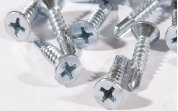steel roof truss bracing
The Importance of Steel Roof Truss Bracing in Modern Construction
In the realm of modern construction, the structural integrity of buildings is paramount. One of the essential components that contribute to this integrity is the steel roof truss system, and at the heart of its design lies an often-underappreciated element bracing. The role of bracing in steel roof trusses cannot be overstated; it provides stability, prevents deformation, and ensures the longevity of structures in various environmental conditions.
Understanding Steel Roof Trusses
A steel roof truss is a framework consisting of triangular units that distribute weight and support the roof. Steel is the material of choice for trusses due to its high strength-to-weight ratio, durability, and resistance to weather-related degradation. However, while the truss itself is engineered to handle vertical loads, it is the bracing that provides resistance against lateral forces such as wind and seismic activity.
The Role of Bracing
Bracing in a steel roof truss system serves to stabilize the structure by creating a triangulated system that resists shear forces. When lateral loads are applied, such as gusts of wind or shifts in the foundation due to earthquakes, braces help maintain the original shape of the truss and prevent buckling. This is particularly important in areas prone to extreme weather conditions, where the risks associated with insufficient bracing can lead to catastrophic failures.
There are several types of bracing systems utilized in steel truss construction, including diagonal bracing, cross bracing, and moment-resisting frames. Diagonal bracing consists of diagonal members that provide direct support against lateral forces, while cross bracing employs an ‘X’ shape between the truss members to enhance stability. Moment-resisting frames, on the other hand, allow for some degree of flexibility, enabling the structure to absorb and distribute forces in a controlled manner.
steel roof truss bracing

Design Considerations
When designing a steel roof truss and its bracing system, engineers must consider various factors, including the geographical location, building height, expected loads, and architectural requirements. The dimensions and materials of both the truss and the bracing must be carefully calculated to ensure they can withstand the anticipated stresses.
Furthermore, building codes and standards established by organizations, such as the American Institute of Steel Construction (AISC), provide guidelines on the minimum requirements for bracing systems. Compliance with these standards is crucial not just for safety, but also for the overall performance of the building.
Installation and Maintenance
The installation of bracing in a steel roof truss is a critical phase in the construction process. Proper alignment and secure connections to the truss members are essential to ensure that the bracing performs its intended function. Additionally, regular maintenance checks should be conducted to identify and rectify any signs of wear or damage over time. Rust, fatigue, and improper connections can compromise the effectiveness of the bracing system, leading to decreased structural integrity.
Conclusion
In summary, steel roof truss bracing plays a vital role in the safety and stability of modern buildings. While steel trusses are strong and efficient, it is the carefully designed and well-executed bracing systems that provide the necessary resistance against lateral forces, ensuring a long-lasting and reliable structural framework. As climate patterns continue to become more unpredictable, understanding and implementing effective bracing solutions will be crucial for architects and engineers alike. The future of construction lies not just in the materials we use, but in how we integrate these components to create safe, sustainable, and resilient structures.
-
Weatherproof Plastic Expansion Anchors for OutdoorNewsJun.06,2025
-
Sustainability in the Supply Chain: Eco-Friendly TEK Screws ProductionNewsJun.06,2025
-
Load-Bearing Capacity of External Insulation FixingsNewsJun.06,2025
-
Double Head Bolts: Enhancing Efficiency in Industrial MachineryNewsJun.06,2025
-
Corrosion Resistance in Chipboard Screws: Coatings for Wholesale DurabilityNewsJun.06,2025
-
Butterfly Toggle Bolts : Enhancing Structural ResilienceNewsJun.06,2025
